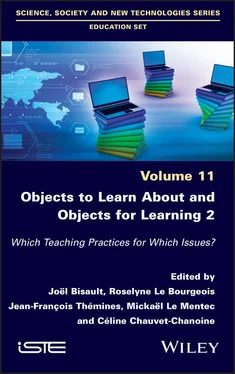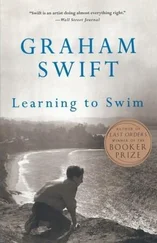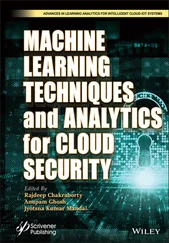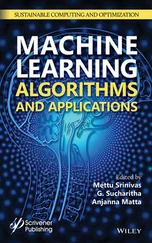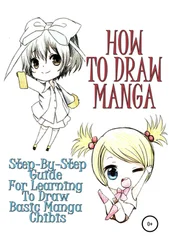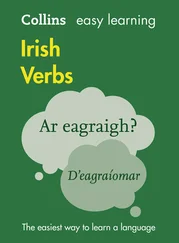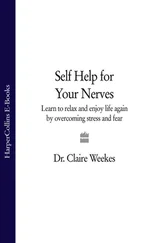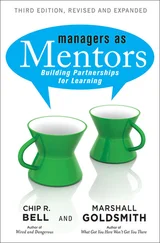1 Cover
2 Title Page Education Set coordinated by Angela Barthes and Anne-Laure Le Guern Volume 11
3 Copyright First published 2022 in Great Britain and the United States by ISTE Ltd and John Wiley & Sons, Inc. Apart from any fair dealing for the purposes of research or private study, or criticism or review, as permitted under the Copyright, Designs and Patents Act 1988, this publication may only be reproduced, stored or transmitted, in any form or by any means, with the prior permission in writing of the publishers, or in the case of reprographic reproduction in accordance with the terms and licenses issued by the CLA. Enquiries concerning reproduction outside these terms should be sent to the publishers at the undermentioned address: ISTE Ltd 27-37 St George’s Road London SW19 4EU UK www.iste.co.uk John Wiley & Sons, Inc. 111 River Street Hoboken, NJ 07030 USA www.wiley.com © ISTE Ltd 2022 The rights of Joël Bisault, Roselyne Le Bourgeois, Jean-François Thémines, Mickaël Le Mentec and Céline Chauvet-Chanoine to be identified as the authors of this work have been asserted by them in accordance with the Copyright, Designs and Patents Act 1988. Any opinions, findings, and conclusions or recommendations expressed in this material are those of the author(s), contributor(s) or editor(s) and do not necessarily reflect the views of ISTE Group. Library of Congress Control Number: 2021949741 British Library Cataloguing-in-Publication Data A CIP record for this book is available from the British Library ISBN 978-1-78630-774-3
4 Preface
Part 1 of Volume 1 – Objects and Language(s) Part 2 of Volume 1 – Objects and Early Learning Part 1 of Volume 2 – Objects and Representations of Space and Time Part 2 of Volume 2 – Objects and Traces of the Activity Part 3 of Volume 2 – Points of View on Objects and Perspectives
5 Acknowledgements Scientific committee of this publication
6 PART 1 Objects and Representations of Space and Time 1 The Map and the Game: Objects for Learning Geographical Points of Reference in Elementary School1.1. Introduction 1.2. Points of reference: A special place in geography as it is taught 1.3. Points of reference in upper elementary curricula 1.4. Creating a game about geographical points of reference 1.5. Evaluation periods 1.6. Conclusion 1.7. References 2 The Didactic Use of Physical Objects in the Kindergarten School Calendar Ritual: A Case Study2.1. Introduction 2.2. Theoretical framework 2.3. The official kindergarten school curricula 2.4. Physical context and the technique of the calendar ritual activity 2.5. Research methodology 2.6. Data analysis and discussion 2.7. Conclusion 2.8. References 3 The Map in the Core School, An Object for Learning3.1. Introduction 3.2. A reference framework in geographical pedagogy for thinking about maps 3.3. Understanding students’ geographic knowledge through map production 3.4. The map object: Between images of daily practices and formal academic products 3.5. Conclusion: Proposals for revitalizing teaching practices for geography 3.6. References 4 Professional Report: Using a Song as a Mediating Object for Learning Temporal Points of Reference4.1. Introduction 4.2. Conceptual framework 4.3. Methodology 4.4. Results and discussion 4.5. Conclusion 4.6. Appendix 4.7. References 5 Professional Report: From Tangible Objects to Interactive Maps for Moving Around and Learning an Area – Two Examples with People with Visual Impairments5.1. Introduction 5.2. Two research examples proposing learning objects for learning about space 5.3. Conclusion 5.4. Acknowledgments 5.5. References
7 PART 2 Objects and Traces of the Activity 6 From the Self-Evaluation Object to the Learning Subject6.1. Introduction 6.2. Theoretical framework 6.3. First phase: The digital object and its experimental context 6.4. Second phase: The non-digital object and a new experimental context 6.5. Discussion 6.6. Conclusion 6.7. Appendix 6.8. References 7 Creating a Sound Garden: Transforming Recycled Materials into Objects for Learning7.1. Introduction 7.2. Objects for learning 7.3. Methodology 7.4. Results 7.5. Discussion 7.6. Conclusion 7.7. References 8 The Experimental Protocol Poster in a “Preschool” Class: An Object for Learning or an Object to Learn About?8.1. Introduction and theoretical framework 8.2. Methodology for data collection and analysis 8.3. Context 8.4. Results 8.5. Discussion 8.6. Conclusion 8.7. References 9 Challenges in First-Years Schools: Early Manifestations of Executive Function9.1. The first manifestations of executive control at the end of the first year 9.2. The hegemonic status of language in self-regulation and EF 9.3. Self-regulation and EF through action and gestures 9.4. Children’s first challenges in first-years schools 9.5. Discussion 9.6. Conclusion 9.7. References
8 PART 3 Points of View on Objects and Perspectives 10 A Cultural Viewpoint about Objects: Objects that Narrate Cultures and Emotions10.1. Speaking objects 10.2. Objects and material culture 10.3. Objects: Narrators of histories 10.4. Museums as generators of emotions 10.5. Didactics of objects in a history course 10.6. References 11 Four Researchers’ Points of View11.1. Overview 11.2. Anne-Laure Le Guern: Material culture and pragmatic preoccupations in training and research 11.3. Mickaël Le Mentec: Socio-educative uses of digital technologies 11.4. Jean-François Thémines: Objects between location and learning 11.5. Abdelkarim Zaid: Objects in the didactics of technology education 11.6. References 12 The Object Stance: Philosophical Perspectives 12.1. Extension and comprehension of the concept of the object 12.2. The dialectics of subject and object 12.3. Pedagogy of the “shock object” and education for contingency 12.4. References
9 List of Authors
10 Index
11 Summary of Volume 1
12 End User License Agreement
1 Chapter 1 Figure 1.1. The Repères d’histoire chronological timelines Figure 1.2. Appearance of the game about geographical points of reference Figure 1.3. Clue sentences. Translation: This leaning tower was built in 1173. I...
2 Chapter 2 Figure 2.1. Lena is reading the sentence on the calendar
3 Chapter 3Figure 3.1. Base map provided to students for data collection Figure 3.2. All of the students assessed considered social requirements (total n...Figure 3.3. A first form of a door-to-door transportation network (fifth grade, ...Figure 3.4. The need for “recreation” dominates the space on the map (fourth gra...Figure 3.5. Transportation networks, a mark of spatial reasoning (total number: ...Figure 3.6. Absence of transportation routes in a micro-zone (fifth grade (CM2))...Figure 3.7. Absence of transportation routes in a region (fifth grade (3e)). For...Figure 3.8. A network serving the entire city area (fifth grade (CM2)) Figure 3.9. A network serving an entire region (ninth grade (3e)). For a color v...Figure 3.10. Legend use and knowledge of geography (total number: 1022 maps). Fo...Figure 3.11. Lou-Ann (fifth grade (CM2)) created her legend before arranging her...Figure 3.12. Sèrine (fifth grade (CM2)) created her legend after designing her i...Figure 3.13. The vocabulary used by students in legends or in annotations (total...Figure 3.14. Types of figures chosen by the students (total number: 1022 maps). ...Figure 3.15. A map by a fifth-grade (CM2) student with overhead view Figure 3.16. Map by a fifth-grade (CM2) student with top-down view. For a color ...Figure 3.17. Map by a sixth-grade (6e) student produced using a juxtaposition of...
4 Chapter 4Figure 4.1. Two students’ scores Figure 4.2. Analysis of the song mediating learning: Snowflakes by Hamelin3. Tra...
Читать дальше
